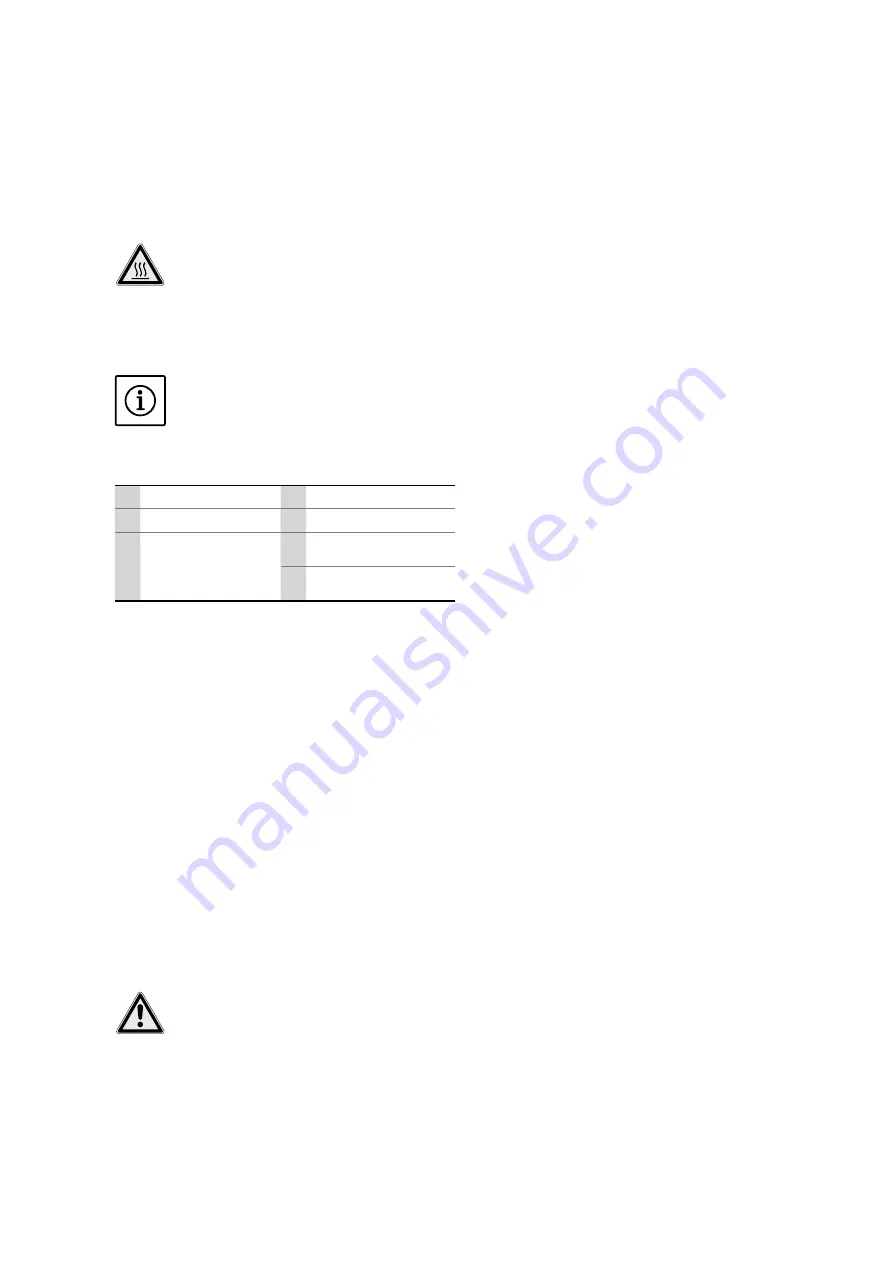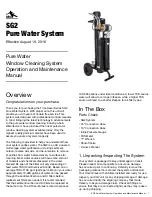
Installation and operating instructions Wilo-Drain TMT 32M 31
INSTALLATION
English
Either a pressure hose or an existing discharge
pipeline is connected to the pressure side.
If the motor emerges during operation, the
following operating parameters must be strictly
observed:
• The
max. fluid temperature and ambient tem
-
perature
is
75 °C
.
•
Non-immersed operating mode: S3 25%
BEWARE of burns!
The housing parts can heat up to above
100 °C. There is a risk of burns! After switch
-
ing it off, let the pump cool down to ambient
temperature.
Discharge pipeline connection
NOTE
The pump is only held in place here by the pip-
ing. All vibrations and torques are transferred to
the pipe system!
Fig. 2.: Stationary installation
1 Pump
4 Impact protection plate
2 Discharge pipeline
5 Inlet
3 Non-return valve
6a
Min. water level for im-
mersed operation
6b
Min. water level for
non-immersed operation
Work steps
1.
Preparing pumps: about 1 h
•
Connect the pipe elbow to the pressure port
using the threaded flange/flange connection.
2.
Installing the pump: about 1-2 h
•
Once the pipe elbow has been connected, posi
-
tion the pump at the pressure pipe. If neces-
sary, secure lifting equipment to the pump with
a shackle, lift the pump and then lower to the
intended location (sump, pit).
• Screw the pipe elbow onto the existing dis-
charge pipeline.
• Route the power supply cable in such a way
that it cannot be damaged.
• Have the electrical connections made by a
qualified electrician.
3.
Commissioning the pump: about 1-3 h
•
As described in the “Commissioning” section
Connecting a pressure hose
RISK of pressure hose becoming separated!
Uncontrolled separation or movement of the
pressure hose can result in injuries. Secure the
pressure hose appropriately. Prevent buckling
of the pressure hose.
Work steps
1.
Preparing pumps: about 1 h
•
Fit the pipe elbow to the pressure connection
using the hose connection.
•
Fasten the pressure hose to the pipe elbow
with a hose clip.
2.
Installing the pump: about 1-2 h
• Position pump in installation location. If neces-
sary, secure lifting equipment to the pump with
a shackle, lift the pump and then lower to the
intended location (sump, pit).
•
Check that the pump is vertical and on a solid
bearing surface.
Avoid sinking.
• Route the power supply cable so it cannot be
damaged.
• Have the electrical connections made by a
qualified electrician.
• Route the pressure hose so that it is not
damaged and fasten it at certain points (e.g.
outflow).
3.
Commissioning the pump: about 1-3 h
•
As described in the “Commissioning” section
5.3.3. Level control
Fill levels can be determined using the level
control system, meaning the pump is switched on
and off automatically. The fill level can be record
-
ed using float switches, pressure and ultrasound
measurements or electrodes.
Note the following information:
•
When using float switches, ensure that they can
move freely in the operating area!
• The water level must not fall below the minimum!
• The maximum switching frequency may not be
exceeded!
•
If the fill levels fluctuate strongly, then a level
control should be made on two test points as
standard. This means larger differential gaps are
reached.
Installation
For correct installation, please see the installation
and operation instructions for the level control
device.
Observe the information on the maximum
switching frequency and the minimum water
level!
5.4. Dry-running protection
To ensure the necessary cooling, the pump must
be immersed when in operation, depending on
the operating mode. In addition, make sure that
no air enters the hydraulics housing.
The pump must therefore always be immersed
in the fluid up to the top edge of the hydraulic
housing or, if applicable, up to the top edge of
the motor housing. For optimum operational
reliability, we recommend installing a dry-running
protection system.
Correct running is ensured by float switches or
electrodes. The float switch or electrode is fixed
in the sump and switches off the pump when the
water level falls below the minimum coverage
level. If the dry-running protection only includes
one floater or electrode and the fill levels deviate
significantly, then the pump may turn on and
off constantly! This can result in the maximum






































